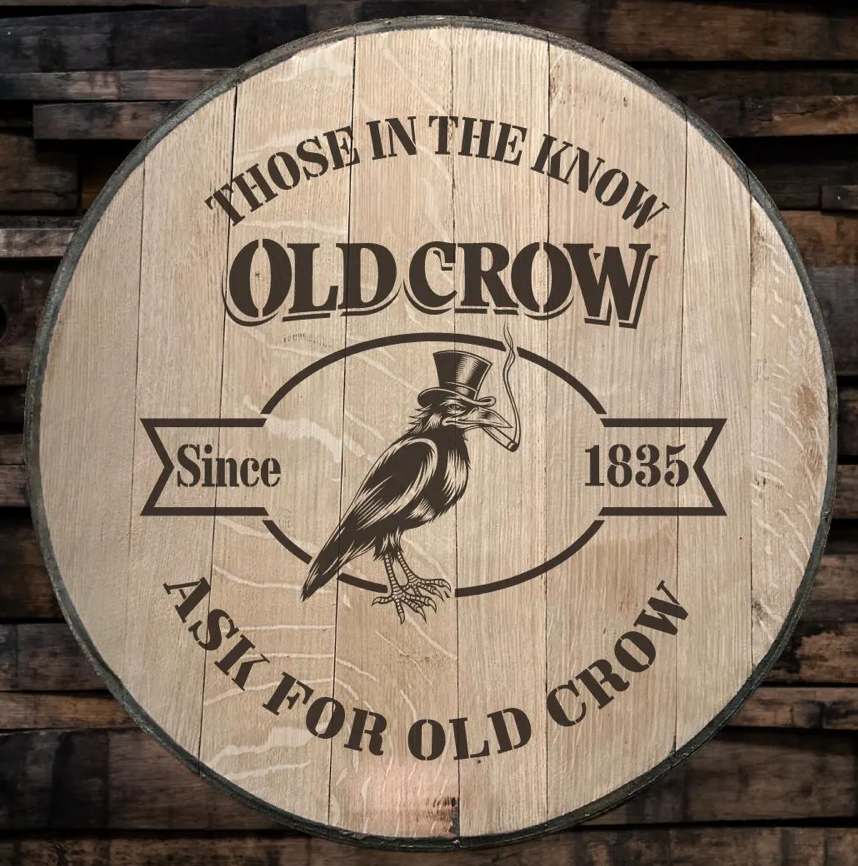
Dr. James C. Crow
Above is an AI-generated image of Dr. James Crow based on a sketch illustration.
Perfected the "Sour Mash Method"
Dr. James C. Crow was a Scottish immigrant who, by trade, was a chemist and a physician. Crow arrived in the United States in 1820 and worked for a couple of distilleries until Oscar Pepper made the best move of his career (and probably in the entire bourbon world) by hiring Dr. Crow in 1838 to become his "Master Distiller." Crow didn’t use copper pot stills like everyone else. Instead, he used the newly invented Coffey still, which was a column still that brought the white dog off at a consistent strength. He checked that strength with a hydrometer while most distillers of the day shook the jar to see the beads and guess the proof, or used gunpowder and a match to prove it. Crow also utilized litmus paper and a saccharimeter to check acid and sugar levels, technologies which were way ahead of their time, particularly in the backwoods whiskey communities west of the Appalachians.
Within a few years, Crow was distilling what would come to be "Old Crow" in Frankfort, Kentucky, in the 1830s. He invented and perfected the sour mash process and made what was probably the first "modern" bourbon back in 1834. He continued to employ the “Sour Mash Method” daily to give the whiskey consistency. It was also in the 1830s when Old Crow started branding its barrels on both the head and on the barrel belly. Saloons at the time stored the barrels on a shelf about four to five feet high and put a tap in the to pour drinks from. Old Crow branded their barrels to make sure that when a patron asked for Old Crow they could see that it was actually coming from their barrel. It was this practice that started the commonly used term “Brand Name.”
Because of his whiskey’s popularity, Crow’s competitors began to use those same types of techniques and started using column stills with branded barrels. From this point onward until the modern day, Dr. Crow’s influence on the Silver Age of bourbon was well underway.
His Old Crow bourbon was the most popular brand of its era, and was enjoyed by U.S. Grant, Daniel Webster, Andrew Jackson, Henry Clay, Mark Twain, journalist Hunter Thompson, and John Wayne. His bourbon was known as red whiskey, red liquor, or red eye, since he aged all of it in charred barrels, and it had the “red” or amber hue which we are all familiar with now, but was not often the case in the mid-1800s.
After the cabinet accused General Ulysses S. Grant of being a drunk. President Lincoln supposedly replied, "By the way, gentlemen, can either of you tell me where General Grant procures his whiskey? Because, if I can find out, I will send every general in the field a barrel of it!”, lending further credence to the quality of Crow’s concoction. Fearing never being able to drink Old Crow again, the soldiers wrote Lincoln proclaiming, "We must not let the fine gentleman Old Crow escape. Remember, Mr. President, the crow with the sharpest talons holds on to barley forever." Old Crow's logo, a crow perched atop grains of Barley, is rumored to stand as a symbol bridging the Gap between the North and South during the Civil War. A Pennsylvania brigade training at State College, Pennsylvania, was thought to have remarked that Old Crow was the only good thing to ever come out of the South.
A very skilled distiller, Dr. Crow made whiskey for various other distillers. Crow died in 1856, but W. A. Gaines & Company kept the name brand “Old Crow” and continued to distill the bourbon according to his recipe. A dispute over ownership of the name "Old Crow" was decided in 1915 in favor of the Gaines company.
Old Crow was the most popular whiskey of its day and continued to be the #1 selling bourbon until the 1950s, when it was surpassed by upstarts Jim Beam and Jack Daniel's. Although the whiskey had been the top-selling bourbon, it underwent a swift decline in the second half of the twentieth century. A production error in the amount of "setback" used during production at one time in the late 1950s negatively affected the taste of the whiskey, and the distiller's unwillingness to correct it led to many drinkers moving on to other brands.
Parent company National Distillers and the Old Crow recipe would be sold to Jim Beam in 1987. The Old Crow logo was not retained either, and the product thereafter would be only a three-year-old bourbon based on the Jim Beam usual mashbill of 76% Corn, 12% Rye, and 10% Malted Barley.
Two brands currently produced by Jim Beam are named after the inventor of the “Sour Mash Method,” Dr. James Crow. They are pictured above in Old Crown Kentucky Straight Bourbon Whiskey (aged 3 years, 80 Proof) and Old Crow Reserve (aged 4 years, 86 Proof).
Contributed by Colonel Craig Duncan, Columbia, Tennessee
“The Olds,” is a group of three of the Oldest brands in the country. They were purchased by the James B. Beam Distilling Company in 1987 when they acquired the spirits division of the National Distillers.





